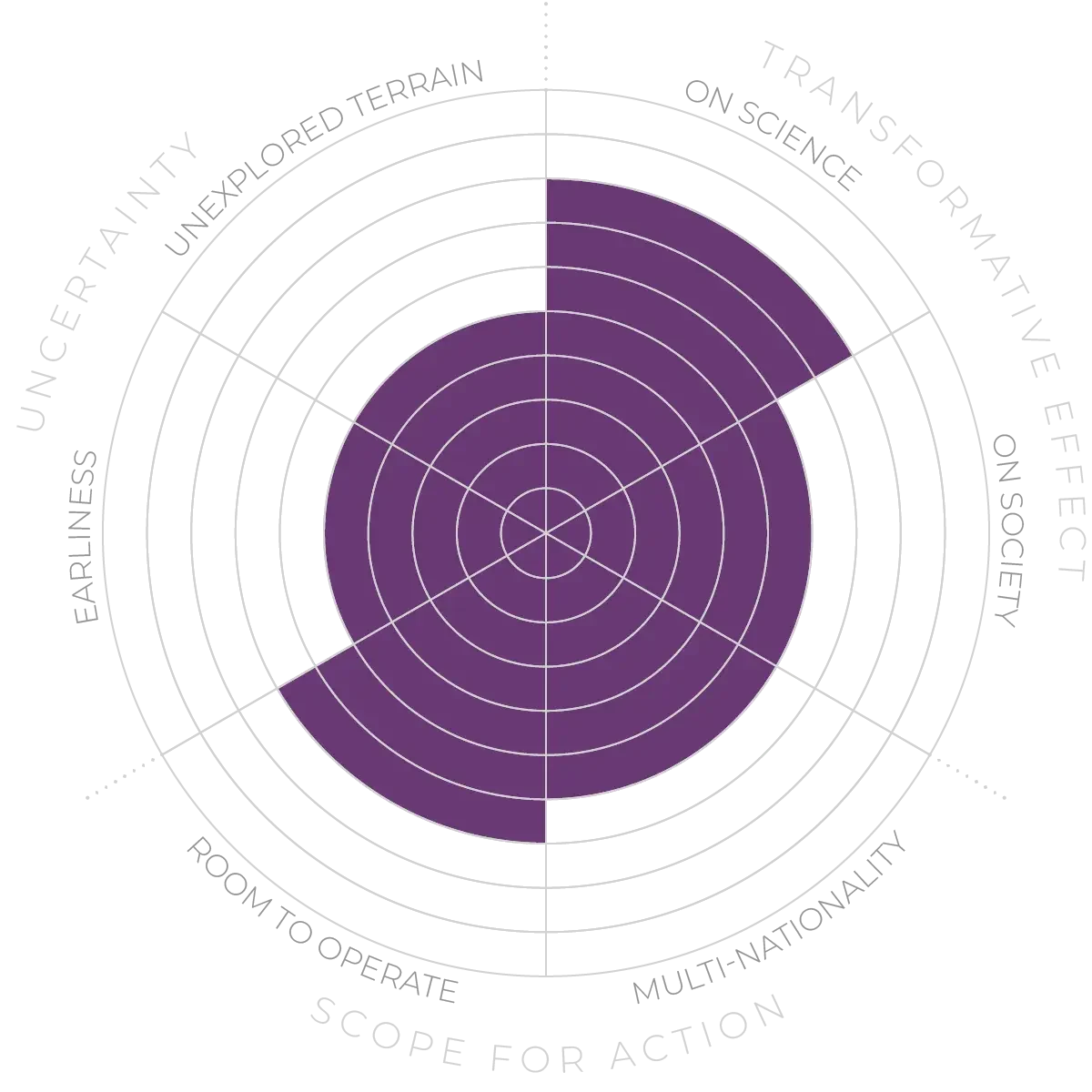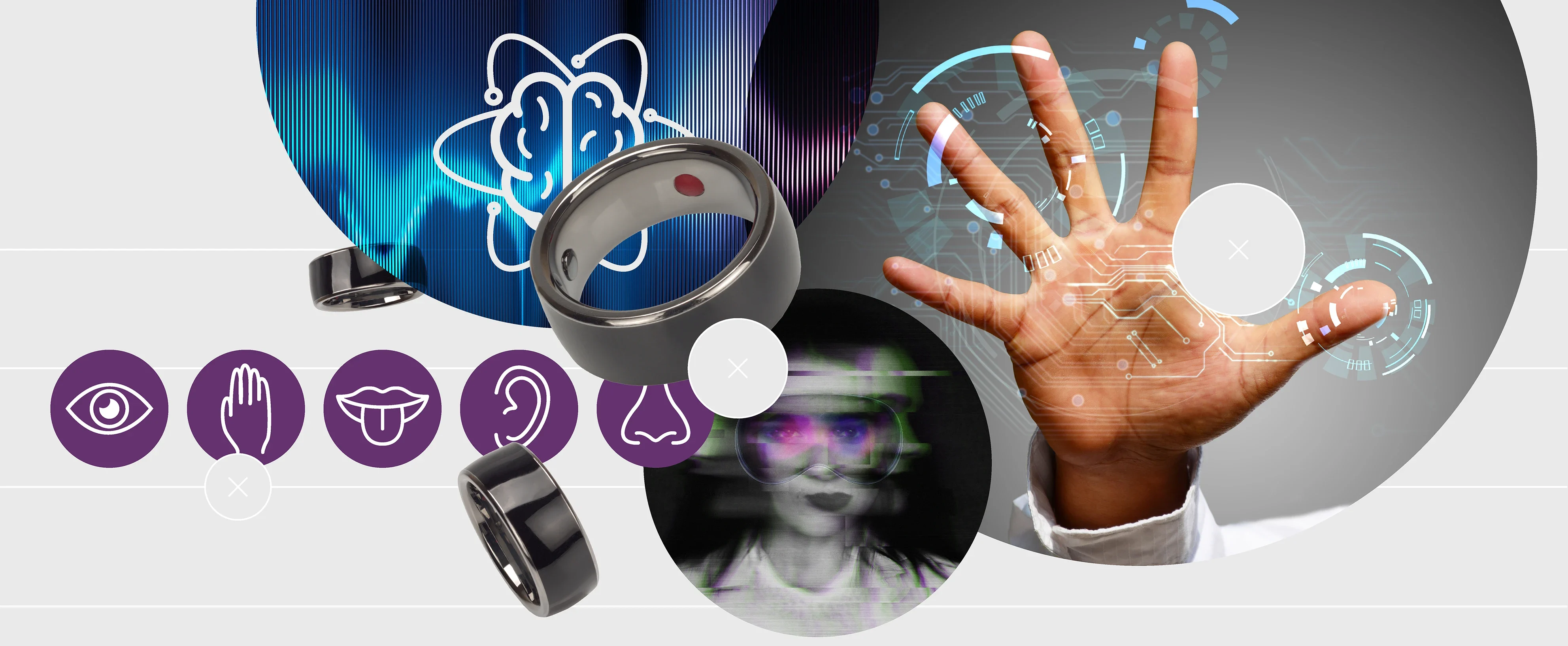Future Horizons:
10-yearhorizon
Virtual and real experiences become increasingly similar
25-yearhorizon
Brain-computer interfaces evoke realistic multisensory experiences
A wide range of wearable haptic devices has been developed to simulate various tactile sensations such as pressure, texture and temperature.54 These include gloves, vests and bracelets that rely on a variety of approaches to generate tactile illusions such as vibrating electromechanical devices, electrical stimulation or shape-changing materials. These devices can be cumbersome, though, which is spurring growing interest in “mid-air haptics”, which uses ultrasound beams to stimulate the skin and generate highly modifiable tactile sensations without physical contact.55,56 Another emerging approach involves using mobile robots to simulate virtual objects57 or even reconfiguring physical environments to match the virtual one.58
Simulating the chemical senses of taste and smell is now becoming feasible. So-called gustatory interfaces are making it possible to recreate taste sensations in virtual experiences.59,60 Olfactory interfaces can be combined with software that is able to recreate how smells evolve over space and time.61,62
In the near term, haptic technology could play an important role enhancing the realism of mixed-reality training in fields like medicine.63 But in the future it could also make XR experiences more immersive and boost their emotional depth.64,65,66 However, this will require us to move away from using isolated haptic stimuli as an accessory to audio-visual experiences and instead work out how sequences of sensations can be combined to compose multisensory narratives.
Haptics and multisensory interfaces - Anticipation Scores
The Anticipation Potential of a research field is determined by the capacity for impactful action in the present, considering possible future transformative breakthroughs in a field over a 25-year outlook. A field with a high Anticipation Potential, therefore, combines the potential range of future transformative possibilities engendered by a research area with a wide field of opportunities for action in the present. We asked researchers in the field to anticipate:
- The uncertainty related to future science breakthroughs in the field
- The transformative effect anticipated breakthroughs may have on research and society
- The scope for action in the present in relation to anticipated breakthroughs.
This chart represents a summary of their responses to each of these elements, which when combined, provide the Anticipation Potential for the topic. See methodology for more information.



